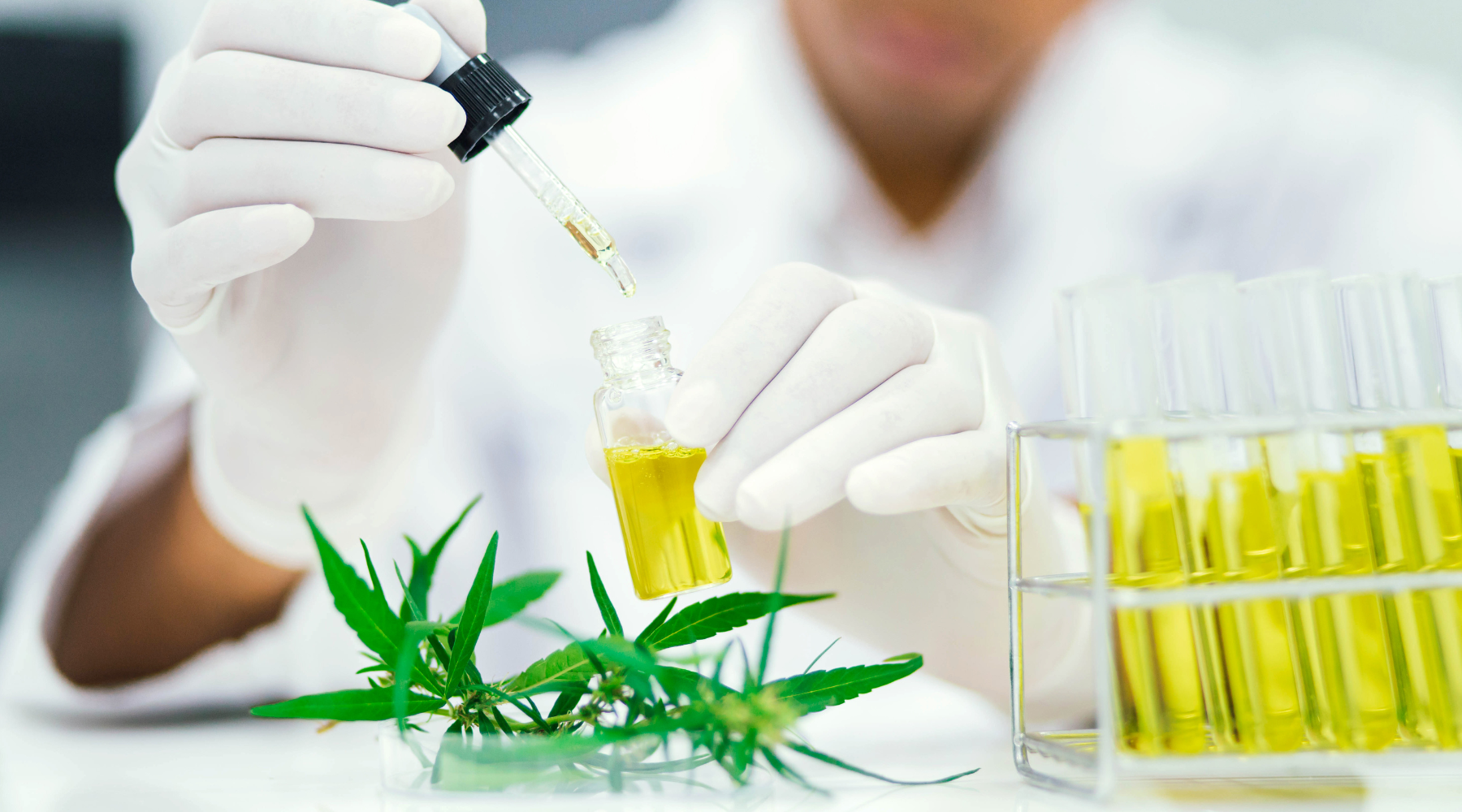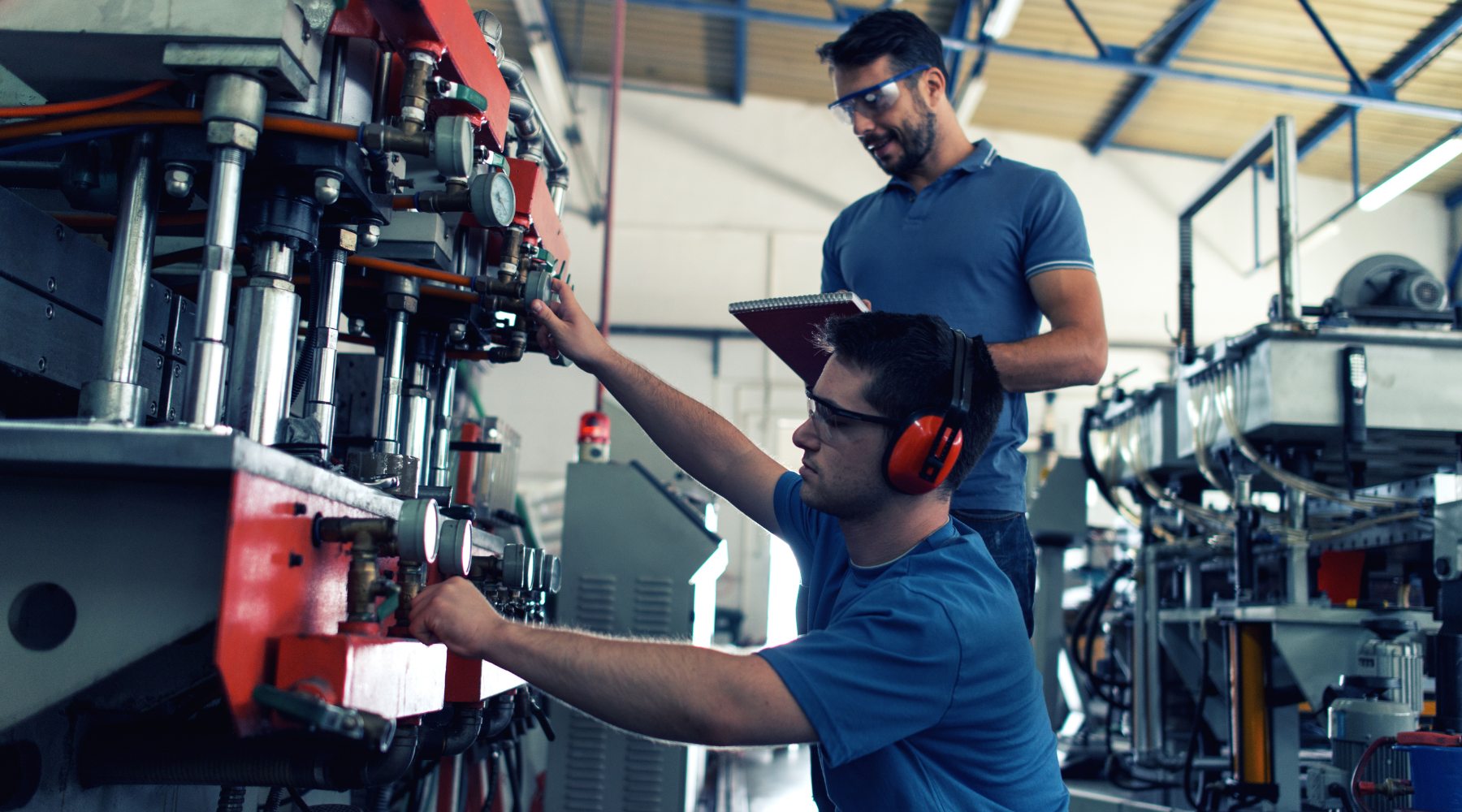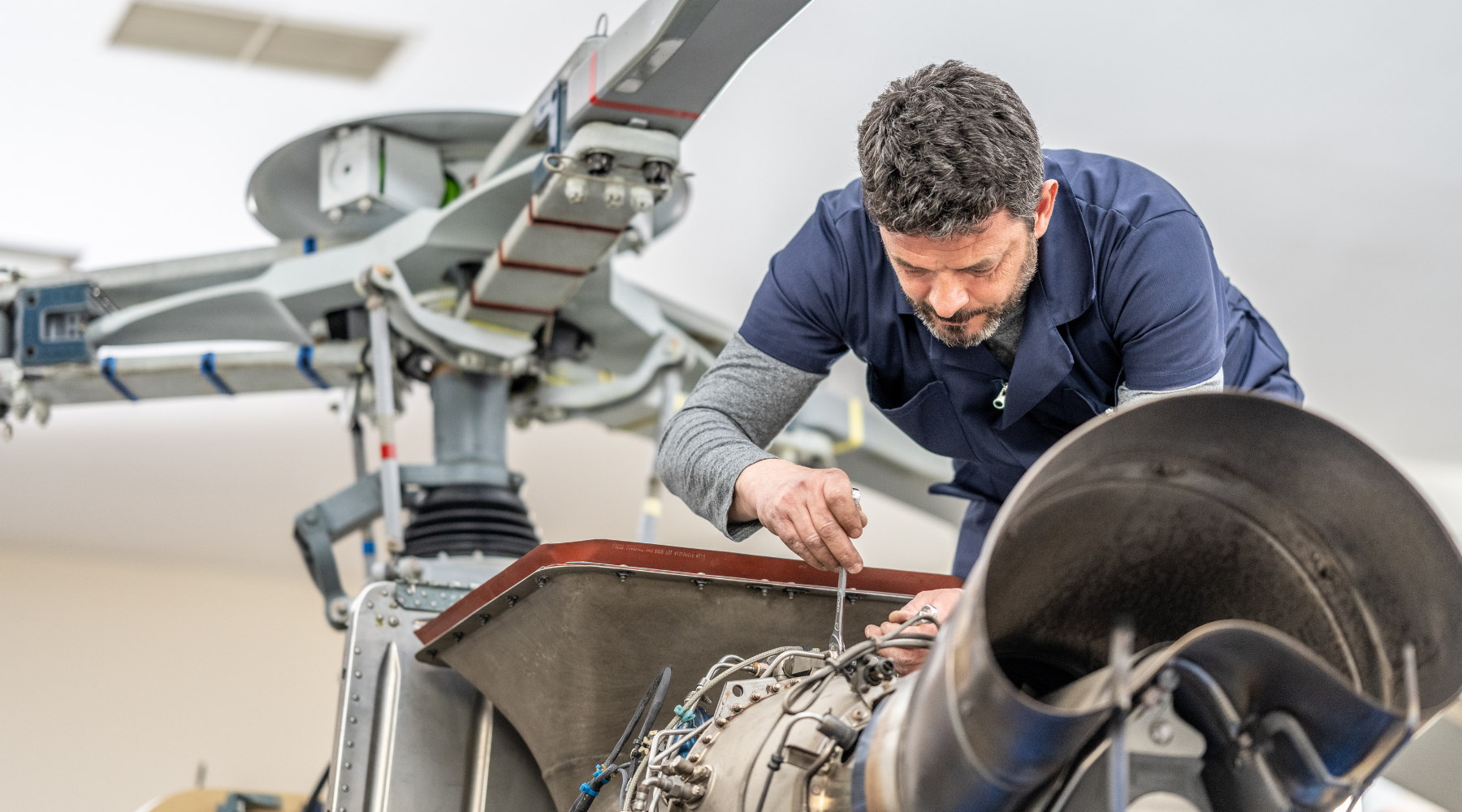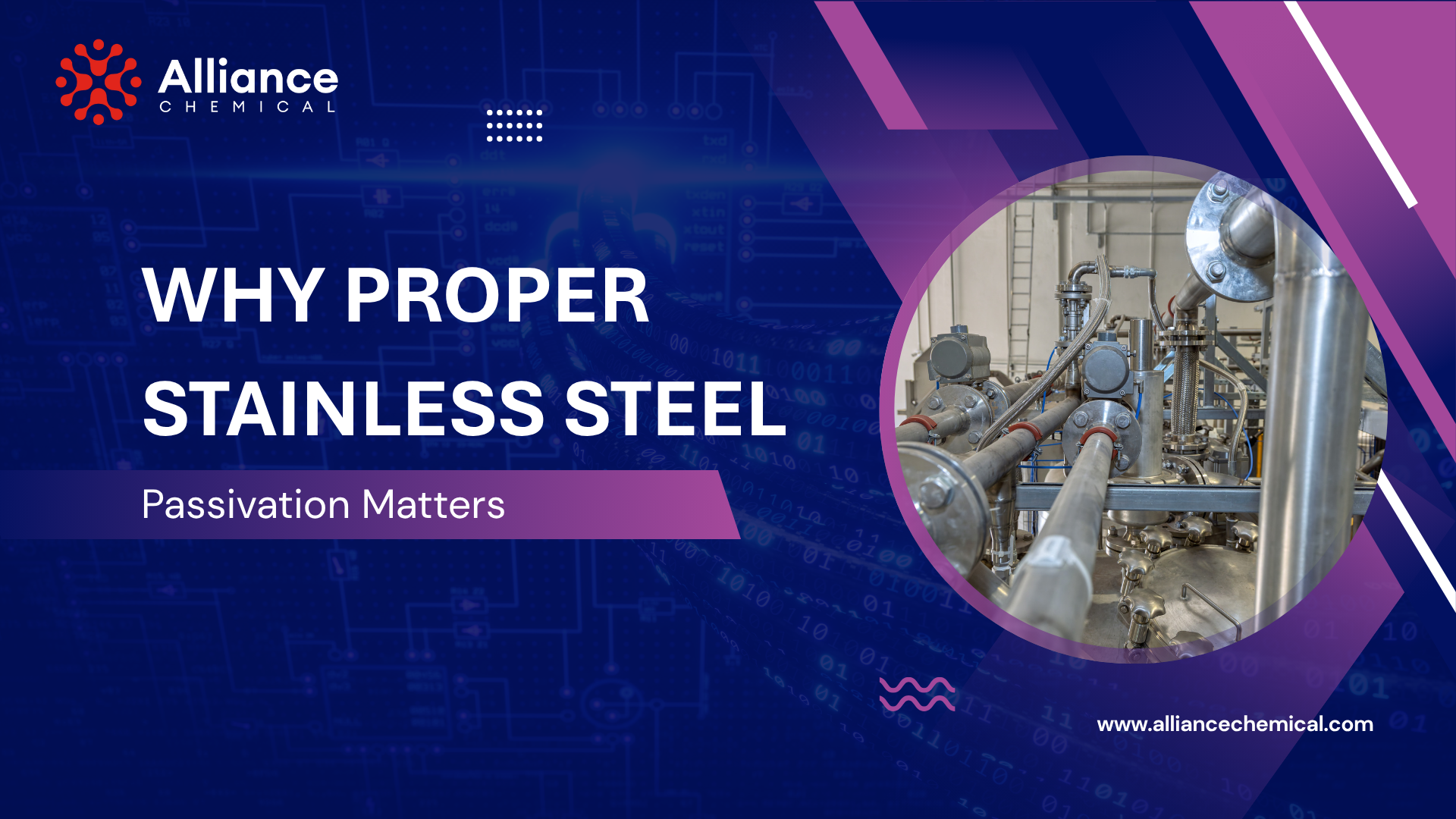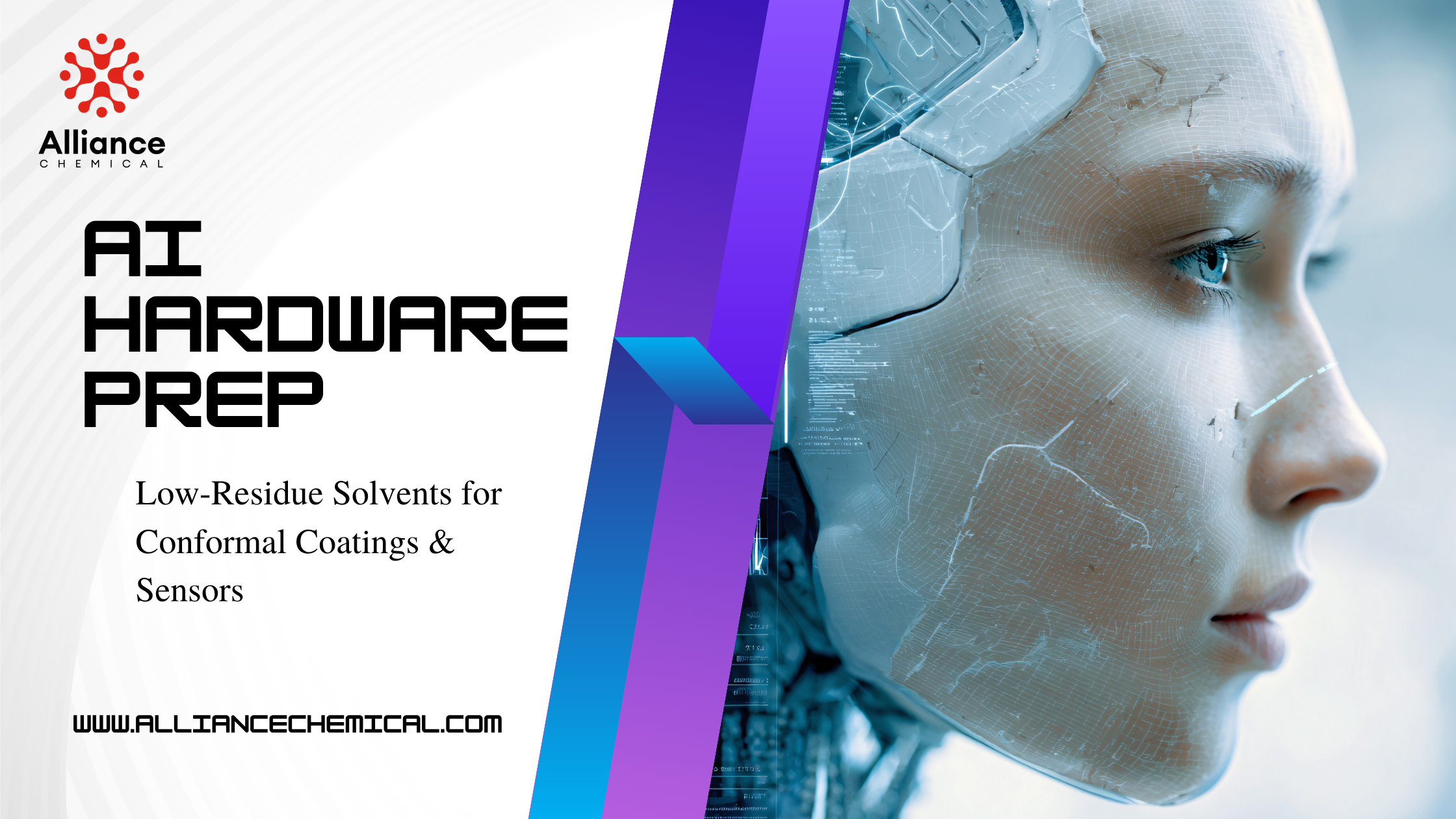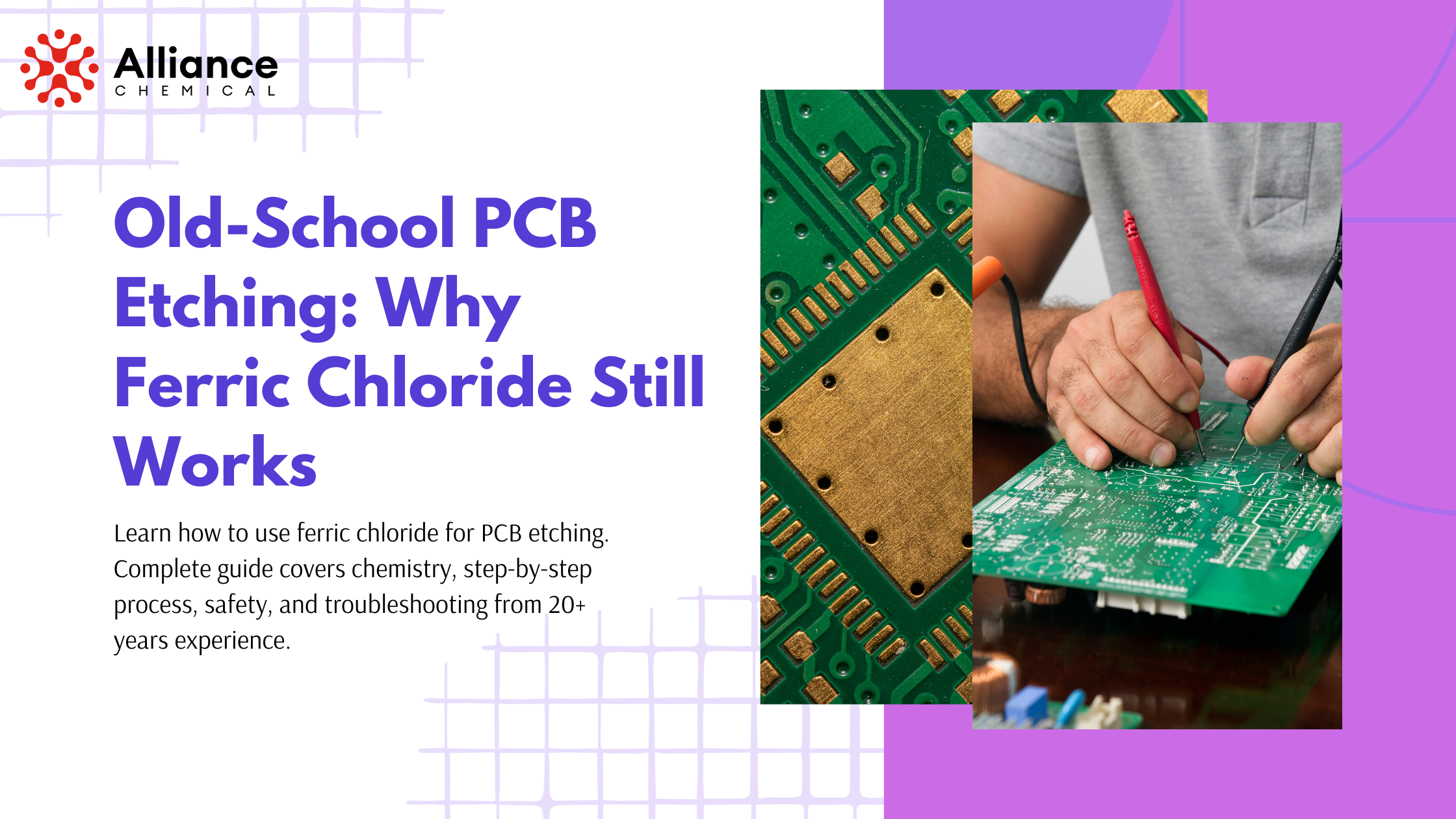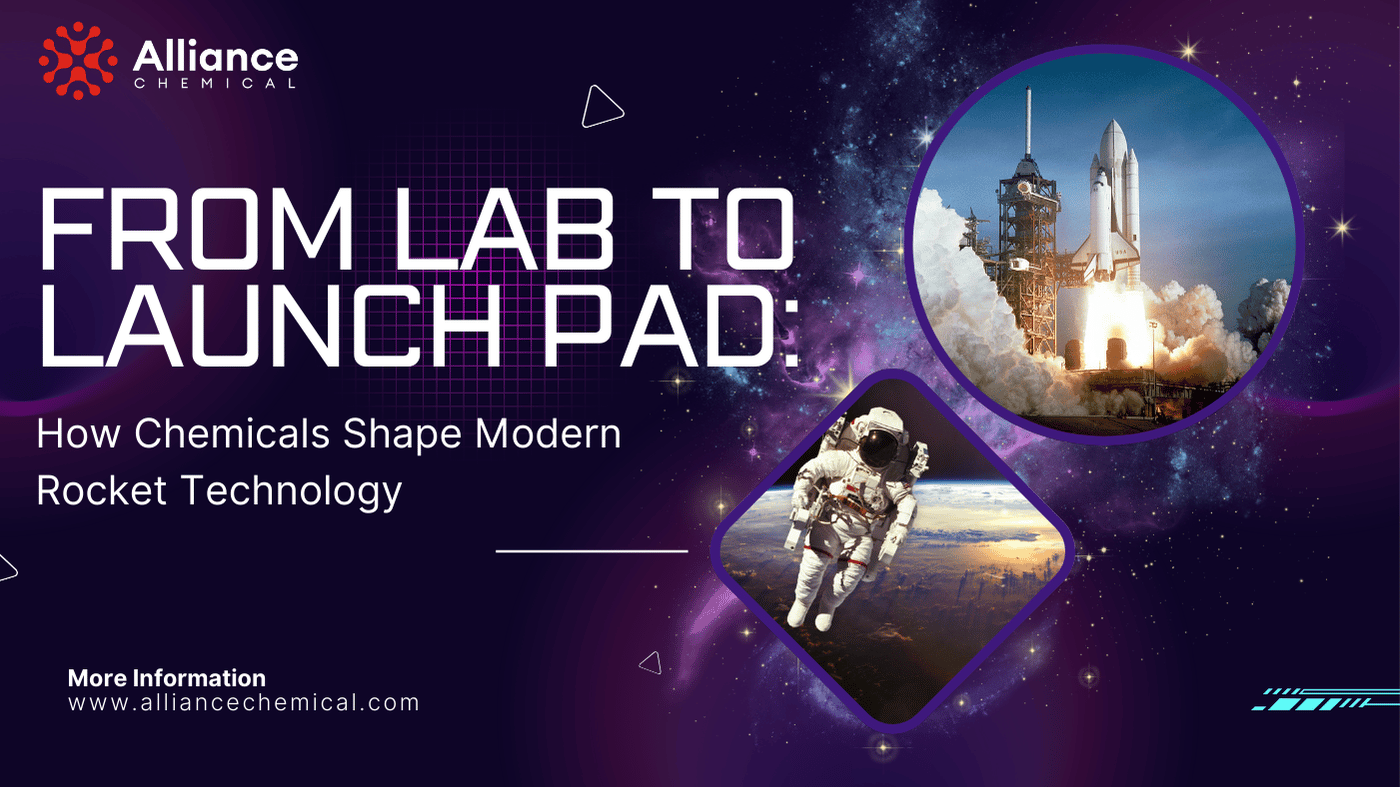
From Lab to Launch Pad: How Chemicals Shape Modern Rocket Technology
Table of Contents
Summary
Quick Navigation
- 1. Introduction
- 2. A Brief History of Rocket Propulsion
- 3. Rocket Essentials: Fuel, Oxidizers & More
- 4. Chemicals from Alliance Chemical in Rocketry
- 5. Understanding Propellants & Combustion Science
- 6. Manufacturing & Testing Requirements in Modern Rockets
- 7. Safety, Handling & Environmental Considerations
- 8. Innovations: Green Propellants, Hybrid Engines & Beyond
- 9. Facilities & Infrastructure: From Cleanrooms to Test Stands
- 10. Case Study: Hypothetical Rocket Startup Leveraging High-Performance Chemicals
- 11. FAQs
- 12. Conclusion
- 13. References & Resources
1. Introduction
Rockets: for decades, they’ve symbolized humanity’s loftiest ambitions—space exploration, satellite deployment, scientific discovery, and even point-to-point travel on Earth. Yet behind every rocket launch and successful orbital insertion is a careful orchestration of engineering, chemistry, and physics. From the selection of propellants and oxidizers to the specialized cleaning agents that keep engine components in pristine condition, chemicals play a pivotal role in ensuring reliability and success.
In this blog, we’ll delve into the chemistry behind rocket propulsion, highlighting how crucial elements—like fuels, oxidizers, coolants, cleaning solutions, and more—come together to create a rocket engine’s controlled explosion. We’ll also explore how dedicated suppliers like Alliance Chemical can support aerospace projects, providing everything from propellant ingredients to specialized solvents and acids for engine testing, manufacturing, and maintenance.
2. A Brief History of Rocket Propulsion
2.1 Ancient Beginnings
The earliest forms of rocketry trace back to ancient China, where gunpowder-filled tubes were used as “arrows of fire” for festivals and rudimentary warfare. Although primitive, these devices introduced a core concept: confined chemical reactions produce thrust. Over centuries, this technology spread globally, evolving through the input of scientists like Konstantin Tsiolkovsky, Robert Goddard, and Wernher von Braun.
2.2 The Space Race Era
The mid-20th century saw unprecedented progress as superpowers funneled massive resources into rocket development. Liquid-fueled rockets featuring cryogenic propellants (e.g., liquid hydrogen and liquid oxygen) and storable hypergolic pairs (e.g., hydrazine and nitrogen tetroxide) became the backbone of missions to the Moon, Mars, and beyond. During this period, the rocket equation, propellant chemistry, and advanced metals shaped the industry’s cutting edge.
2.3 The Commercial Boom & NewSpace
In the 21st century, commercial players (SpaceX, Blue Origin, Rocket Lab, etc.) disrupted aerospace with more cost-effective launches and reusability. Their innovations rely heavily on refined chemical processes— from advanced engine manufacturing to on-the-pad fueling—underlining just how fundamental chemicals and materials science are to rocket success. Traditional giants (NASA, Roscosmos, ESA, JAXA) have also embraced these new paradigms, pushing the boundaries of rocket performance even further.
Looking to the future? From greener propellants to 3D-printed engine components, the next generation of rockets will continue to rely on cutting-edge chemistry for improvements in performance, safety, and sustainability.
3. Rocket Essentials: Fuel, Oxidizers & More
Rockets embody the synergy between chemical reactants (fuel + oxidizer) inside a combustion chamber, releasing a high-temperature, high-pressure gas that’s ejected at supersonic speeds through the nozzle to produce thrust. Let’s break down the building blocks:
3.1 Fuel
Rocket fuels typically fall under three categories: solid, liquid, and hybrid. Within liquid fuels, hydrocarbons (RP-1, which is a refined kerosene variant) and cryogenic hydrogen are common choices. While not always the exact same as consumer-grade kerosene, refined rocket-grade kerosene is an advanced, purified, stable version—similar in base chemistry to certain Kerosene K1 Clean Burning Fuel from Alliance Chemical, though specialized doping and refinement steps can differ.
- RP-1 (Kerosene-based): Dense, stable at room temperature, widely used by SpaceX (Merlin engines) and older rocket families like Atlas and Soyuz.
- LH2 (Liquid Hydrogen): Extremely high performance but cryogenic at -253°C. Used in upper stages (e.g., NASA’s SLS or ESA’s Ariane 5) for maximum efficiency.
- Solids: A mixture of powdered metals (often aluminum) and oxidizers (like ammonium perchlorate) that burn once ignited. Common in boosters like those on the Space Shuttle and current SLS rocket.
3.2 Oxidizer
In space, there’s no ambient oxygen to support combustion. Hence, rockets carry their own oxidizers, crucial for the chemical reaction that forms high-energy exhaust gases.
- Liquid Oxygen (LOX): A cryogenic, pale blue liquid. Often paired with kerosene (RP-1) or liquid hydrogen.
- Nitrogen Tetroxide (N2O4): A storable oxidizer used with hydrazine-based fuels in hypergolic engines (e.g., some NASA, ESA, and Russian spacecraft). Hypergolic = ignition upon contact.
- Hydrogen Peroxide: At high concentrations (often >90%), it can serve as a monopropellant (decomposing into steam and oxygen) or be used as an oxidizer in hybrid rocket designs. Alliance Chemical offers lower-grade Hydrogen Peroxide solutions—though advanced aerospace applications demand specialized higher concentrations.
3.3 Coolants & Pressurants
- Pressurants (Helium, Nitrogen): Maintain tank pressure, ensuring stable fuel flow into the engine. Although not exactly chemical reactants, they’re critical to rocket operation.
- Coolants (Methanol-water mix, Gases): Used in regenerative cooling channels or to chill sensitive components. Certain coolants and antifreeze from Alliance Chemical can be adapted for test-stand usage or specialized ground support equipment.
3.4 Cleaning Agents & Surfactants
Long after the engine’s final burn, or even before the rocket is assembled, cleaning steps matter. Modern rocketry involves complex turbomachinery, sensitive valves, and finely machined nozzles that demand a pristine surface condition. To achieve this, engineers rely on industrial-grade solvents, degreasers, and sometimes acids or bases to remove metal oxides or residue build-up.
4. Chemicals from Alliance Chemical in Rocketry
While rocket-grade formulations often call for highly specialized production lines, numerous industrial and laboratory chemicals from Alliance Chemical can find direct or adjacent use in rocketry, particularly in testing, cleaning, and ground support operations. Here are some prime examples:
4.1 Kerosene & Other Hydrocarbons
Kerosene K1 Clean Burning Fuel stands out for potential testing or small-scale rocket demonstration projects where rocket-grade kerosene (RP-1) might not be readily available. K-1’s clean-burning characteristics reduce soot formation, an advantage in certain prototype or demonstration engine designs.
4.2 Hydrogen Peroxide Solutions
Though commercial hydrogen peroxide rarely exceeds 50% concentration, some rocket test labs and hybrid rocket researchers might use lower-concentration hydrogen peroxide in academic or scaled demos. Alliance Chemical’s Hydrogen Peroxide line (ranging from 3% to higher technical grades) can serve as a stepping stone for controlled decomposition tests, cleaning tasks, or ground-based coolant loops (where its oxidative power can be harnessed for sterilization).
4.3 Acids & Bases for Cleaning/Surface Prep
- Nitric Acid: Nitric Acid solutions can be used to remove tenacious oxidation or passivation layers in rocket engine manifolds and injectors.
- Sulfuric Acid: Sulfuric Acid has industrial applications in refining or pickling metals that might go into rocket thrust chambers.
- Hydrochloric Acid: Hydrochloric Acid is another mainstay for cleaning or pH control in solutions used to dissolve scale or residue.
- Ammonium Hydroxide: Ammonia Products (like aqueous ammonium hydroxide) can neutralize acidic effluents from rocket test stands, ensuring safe disposal and environmental compliance.
4.4 Solvents & Degreasers
Keeping pumps, lines, and valves free of organic contaminants can be critical—especially in high-precision valves. Solvents like isopropyl alcohol or acetone (e.g., Acetone ACS Grade) are widely used for final rinse steps. Meanwhile, heavier degreasers can remove oils or greases from rocket engine subassemblies or test hardware.
4.5 Cooling & Antifreeze Solutions
During rocket engine firings on the test stand, ethylene glycol or glycol-based fluids help manage heat loads. This coolant might circulate in ground support equipment, maintain sub-cooled conditions for specific fuels, or protect lines from freezing. Proper fluid selection can make or break a rocket test campaign.
Need aerospace-grade chemicals? Contact us at Alliance Chemical for guidance on selecting and verifying the right chemical products for your rocket or ground support system. Our technical team can advise on purity levels, batch certifications, and safe handling.
5. Understanding Propellants & Combustion Science
Rocket propellants are more than just “fuel.” They represent a delicate chemical arrangement that must generate massive thrust while minimizing hazards like coking, corrosion, or instability during ignition and shutdown sequences. This section dives deeper into how these factors interplay.
5.1 The Rocket Equation & Specific Impulse
Any discussion of rockets inevitably encounters the Tsiolkovsky rocket equation:
Δv = Isp g ln (m0/mf)
Where:
- Δv = change in velocity (important for achieving orbit)
- Isp = specific impulse, a measure of propellant efficiency
- g = standard gravity
- m0 and mf = initial and final mass of the rocket
Higher specific impulse (Isp) means more thrust per unit propellant. That’s why engines using cryogenic hydrogen/oxygen exhibit among the highest Isp at sea level (around 450 seconds), whereas Kerosene/LOX combos produce slightly lower values (in the 330–360 second range). Understanding and optimizing these differences forms the backbone of rocket engine design.
5.2 Combustion Chamber & Injector Design
Fuel and oxidizer must be thoroughly mixed and combusted at high pressures—often above 100 bar in modern engines (Raptor engine from SpaceX goes beyond 300 bar!). The geometry of the injector plate ensures a fine spray or swirl pattern, maximizing the reaction rate and mitigating instabilities like chugging or screaming oscillations. This region sees extreme chemical reactions—exacerbating the need for high-quality, contamination-free chemicals to avoid unexpected corrosion or deposit build-up.
5.3 Hypergolic & Green Propellants
Hypergolic propellants ignite upon contact, removing the need for separate ignition systems. However, many are toxic or highly corrosive (e.g., hydrazine, nitrogen tetroxide). Recent research focuses on “green” hypergolics that reduce toxicity (e.g., rocket-grade hydrogen peroxide plus suitable fuels), which may still require specialized manufacturing conditions. Some labs exploit high-purity hydrogen peroxide solutions as a partial step toward greener rocket design—though advanced concentration levels, typically 85–98%, are beyond typical commercial usage.
5.4 Solid Propellants & Binders
Solid rocket propellants use a polymer binder (like HTPB) that suspends oxidizer particles (ammonium perchlorate) and metallic fuels (aluminum powder). While they don’t directly rely on many standard industrial chemicals from Alliance Chemical, the manufacturing environment still calls for solvents, acids, and cleaning agents to produce or maintain hardware. For instance, ensuring the rocket motor casing is thoroughly cleaned and free of moisture or contaminants prior to casting the solid propellant is crucial.
6. Manufacturing & Testing Requirements in Modern Rockets
Rocket engines and stages are arguably some of the most demanding mechanical systems ever built. Each component must survive extreme temperatures, pressures, and vibrations. Achieving such feats requires meticulous manufacturing steps, many of which rely on chemical processes for shaping, coating, or verifying part integrity.
6.1 Materials & Alloys
- Nickel-based superalloys (e.g., Inconel, Hastelloy): Resist extreme heat in combustion chambers. Chemical cleaning ensures surfaces remain free of carbon deposits or scale.
- Titanium: Common in turbopump components due to high strength-to-weight ratio. Acid etches (like nitric or hydrofluoric acid) might be used in finishing steps, though HF is notoriously hazardous.
- Aluminum-lithium alloys: Popular in tank structures (like SpaceX’s Falcon). Sensitive to corrosion, so specialized bases and caustics for cleaning might apply, followed by thorough neutralization to prevent pitting.
6.2 Non-Destructive Testing (NDT)
Flaws in rocket hardware can lead to catastrophic failure. Techniques like X-ray, ultrasonic scanning, and dye penetrant testing reveal cracks or micro-voids. Dye penetrant methods often use organic dyes or colorants and require solvents for cleanup. This is where Dyes, Stains, and Indicators might come into play, especially in R&D or custom part qualification workflows.
6.3 Chemical Milling & Surface Finishes
Certain rocket parts, like nozzles or turbopump inlets, might be shaped via chemical milling—controlled exposure to acidic or alkaline solutions to remove material. For instance, a nitric-hydrofluoric acid mixture can precisely reduce thickness. Despite the complexity, this approach yields uniform surfaces with minimal mechanical stresses introduced. Proper disposal and waste neutralization of these etchants are integral to facility compliance.
6.4 Component Cleaning & Assembly
- Particle-Free Assembly: A single metal shaving or fiber can block an injector or valve, leading to engine failure. Hence, thorough cleaning is essential.
- ISO Class Cleanrooms: Often used for high-value components like turbopumps or cryogenic valves. The right Cleaning Solutions, combined with HEPA/ULPA filtration, ensures minimal particulate contamination.
- Inspection & Documentation: Each step of cleaning, assembly, and test is documented to satisfy safety regulations and allow traceability if anomalies arise.
6.5 Test Stands & Hot-Fire Campaigns
Engine test stands subject hardware to real operational conditions. Fuels and oxidizers run through the system at flight-like pressure, generating full-scale thrust. Post-test, engineers rely on solvents, acids, or degreasers to remove soot and unburnt fuel from the nozzle and instrumentation ports. Sometimes, industrial cleaners or specialty solvents are used for scrubbing down the facility floors, test stand structure, and protective barriers.
7. Safety, Handling & Environmental Considerations
Rocket propellants and associated chemicals aren’t just potent—they can be toxic, corrosive, cryogenic, or even hypergolic. Ensuring the well-being of personnel and the environment is paramount.
7.1 Regulatory Framework
- OSHA & EPA (United States): Oversee worker safety and environmental compliance for chemical storage and disposal.
- ITAR & EAR: U.S. rocket technology often falls under export control laws. Even chemical supply chains can be restricted, requiring validated end-use certifications.
- Local & International Regulations: The EU, Russia, China, and other spacefaring nations have their own sets of rules on chemical usage, especially for rocket fuels or large-scale acid consumption.
7.2 Storage & Transport
- Temperature Control: Cryogenics (LOX, LH2) require specialized vacuum-jacketed tanks; hypergolics need double-walled containment for leaks.
- Segregation: Storing oxidizers separate from fuels is critical. For instance, hydrogen peroxide should never be near flammable organics without safety measures.
- Ventilation & Fire Suppression: Facilities must implement robust measures to handle potential spills or vapor releases.
7.3 Personal Protective Equipment (PPE)
- Cryogenic PPE: Insulated gloves, face shields to protect from -200°C or colder liquids.
- Chemical-Resistant Gear: Acid-proof aprons, nitrile gloves, respirators for handling corrosive or volatile solvents.
- Spill Kits & Neutralizers: On hand for immediate response, whether acid, base, or fuel spillage occurs.
7.4 Waste Disposal & Environmental Impact
Spent cleaning solutions, leftover propellants, or acid baths must be neutralized or disposed of in compliance with local regulations. In many test stands, effluent water or blowdown from quenched exhaust might contain toxic byproducts. Facilities thus build on-site water treatment or use specialized disposal companies. As the space industry grows, sustainable practices, from reusing hardware to adopting “greener” propellants, are gaining attention.
Need guidance on safe handling? Alliance Chemical provides SDS (Safety Data Sheets), regulatory info, and support for each product. We can assist in ensuring your rocket development environment remains safe, compliant, and efficient.
8. Innovations: Green Propellants, Hybrid Engines & Beyond
As rocket technology enters a new era of cost-effectiveness and reusability, chemical innovations are following suit. Below are some emergent areas transforming the scene.
8.1 Green Propellants
The quest to replace highly toxic hydrazines or ultra-cold cryogenics with safer, less environmentally damaging substitutes is underway. For instance, NASA has tested an AF-M315E “green” monopropellant, which outperforms hydrazine while being less hazardous. Others explore high-concentration hydrogen peroxide or new ionic liquids to reduce ground handling complexity and cost.
8.2 Methane-Fueled Engines
Led by commercial players like SpaceX (Raptor) and Blue Origin (BE-4), methane/LOX engines promise cleaner exhaust and simpler reusability. Methane is more stable than hydrogen and less sooty than kerosene, bridging the gap in performance and cost. In ground support, common industrial chemicals might be used to purge methane lines or clean residue. Advanced solvents and ethylene glycol-based coolants still matter for test stands and cryogenic chillers, showing the continued synergy with industrial chemical supply.
8.3 Hybrid Engines
Hybrid systems store fuel in solid form and the oxidizer in liquid form, or vice versa. This approach can be safer and more controllable than purely solid engines, but less complex than typical liquid bipropellant engines. Often, the oxidizer is concentrated hydrogen peroxide or nitrous oxide, which again underscores the role of advanced chemical supply and purity monitoring.
8.4 Advanced Manufacturing
- 3D Printing (Additive Manufacturing): Allows rocket engine components (e.g., combustion chambers, injectors) to be printed in single pieces with intricate cooling channels. Post-processing can involve chemical treatments to remove support materials or smooth surfaces.
- Nano-Coatings: Plasma coatings or advanced epoxies can reduce oxidation or coking. Substrate prep might involve acid washes or specialized solvents for optimal adhesion.
8.5 Reusability & Rapid Turnaround
Industry leaders now attempt to reuse entire rocket stages, drastically cutting launch costs. The hardware may see multiple flight cycles and endure repeated chemical exposures—like saltwater landings (for ocean recoveries) or cleaning after re-entry. Robust, corrosion-resistant cleaning solutions and protective coatings are crucial for these quick turnarounds. The need for consistent chemical quality intensifies as each flight recycles existing parts.
9. Facilities & Infrastructure: From Cleanrooms to Test Stands
Behind every successful rocket program stands a sprawling infrastructure of labs, cleanrooms, manufacturing lines, test stands, and launch pads. Chemicals weave into each stage, sometimes in obvious ways (fuel loading) and sometimes more subtly (etching metal parts, controlling pH in water systems, or disinfecting ground hardware).
9.1 Cleanrooms & Production Lines
Similar to semiconductor manufacturing, rocket component assembly frequently occurs in particle-controlled environments. This is especially true for turbopumps, guidance electronics, or advanced composites. Solvent wiping, gas purges, or acid baths maintain surfaces at the required cleanliness. To support these operations, companies might rely on a wide array of Solvents, Bases & Caustics, and Cleaning Agents from Alliance Chemical.
9.2 Test Stands
Engine test stands are the heart of R&D and verification. They’re equipped with high-flow lines for propellants, instrumentation for measuring thrust, temperatures, and vibrations, plus water deluge systems for noise and flame suppression. Large volumes of water, sometimes mixed with rust inhibitors or coolants to handle the intense heat, are used here. The stand’s chemical disposal or recycling system must handle leftover propellant or post-fire residue as well.
9.3 Launch Pads
- Fuel & Oxidizer Storage Farms: Giant cryogenic tanks for LOX, LH2, or methane stand near the pad, demanding massive insulation and safety protocols.
- Ground Support Equipment (GSE): Pumps, lines, valves, and quick-disconnects rely on lubrication and cleaning routines that often incorporate industrial chemicals to maintain reliability.
- Environmental Controls: Coastal launch sites face humidity and salt air, leading to corrosion. Protective coatings and rust-inhibiting chemicals (like nitric acid passivation solutions) help preserve equipment.
9.4 Post-Flight Refurbishment
For reusable stages, refurbishment is vital. The entire rocket stage (including the engine, landing legs, and control surfaces) undergoes thorough inspection, cleaning, and part replacement as needed. Solvents remove soot, while alkaline baths or acidic dips might address caked-on residues or salt from sea-based recovery. Each step ensures the rocket is flight-ready for the next mission.
10. Case Study: Hypothetical Rocket Startup Leveraging High-Performance Chemicals
To illustrate how these concepts play out in a real-world scenario, consider a fictional rocket startup—NovaThrust. NovaThrust aims to build a small launcher for dedicated microsatellite missions. Here’s how chemicals from Alliance Chemical factor into their workflow:
10.1 Problem Statement
NovaThrust needs reliable supplies of Kerosene-based fuel, cleaning solvents, acidic solutions for engine maintenance, and ethylene glycol-based coolant for test stands. They must also comply with environmental regulations for wastewater disposal after engine tests.
10.2 Chemical Requirements
- Fuel Tests: Early R&D uses Kerosene K1 Clean Burning Fuel to refine injector designs. While not identical to rocket-grade RP-1, it provides a stable baseline for hot-fire experiments in sub-scale test rigs.
- Oxidizer Handling: They use a third-party supplier for LOX but manage their own lines, cleaned with isopropyl alcohol from Alliance Chemical’s Alcohol Collection.
- Engine Overhaul: After each test, nitric acid (diluted to safe working concentrations) soaks remove coked carbon from nozzles. A water rinse finishes the process, followed by thorough dryness ensured by acetone or IPA rinse.
- Test Stand Cooling: A 50/50 ethylene glycol-water mix runs through heat exchangers to keep the stand from overheating during test firings.
- Safety & Waste: Spent acids and solvents are neutralized or contained in designated drums (sourced from Alliance Chemical’s Equipment & Containers). Environmental compliance documentation ensures local guidelines are met for eventual disposal.
10.3 Outcome & Benefits
- Consistent Test Results: By standardizing on high-purity kerosene and verified cleaning chemicals, NovaThrust sees consistent engine performance across multiple test runs.
- Faster Turnaround: Thorough post-test cleaning reduces coking issues, enabling back-to-back hot-fires within days instead of weeks.
- Cost Control: Consolidating their chemical needs with a single supplier (Alliance Chemical) streamlines logistics and ensures reliable product quality, lowering risk of supply chain hiccups.
- Regulatory Confidence: Detailed SDS, COAs, and disposal guidance from Alliance Chemical help NovaThrust remain compliant with local environmental and safety regulations.
11. FAQs
-
Are standard industrial chemicals suitable for rocket usage?
Answer: Sometimes. It depends on the stage of development and the purity requirements. For early R&D or ground support tasks (cleaning, line flushes, etc.), standard industrial-grade can be acceptable. However, final flight hardware or critical fueling often requires specialized (and more rigorously tested) aerospace-grade equivalents. -
Is “Kerosene K1” from Alliance Chemical the same as RP-1 rocket fuel?
Answer: RP-1 is a highly refined kerosene with specific properties (low sulfur, certain freezing point, etc.). While K1 is also a cleaner-burning kerosene, it may not match RP-1’s exact specs for flight. However, K1 can be a practical stand-in for sub-scale or test rig experiments, or certain engine flush procedures. -
How crucial is acid purity in cleaning rocket components?
Answer: Extremely crucial. Impurities in acid baths can deposit unwanted metals or react unpredictably with alloys. For delicate turbopump parts or injector plates, high-purity acids with minimized metal content ensure consistent and safe surface preparation. -
What about hypergolics like hydrazine or nitrogen tetroxide—do you supply these?
Answer: Such substances are heavily regulated. Alliance Chemical focuses on an extensive range of industrial and lab chemicals, including acids, bases, solvents, etc., but not typically government-restricted rocket propellants. Always verify local regulations and licensing requirements. -
Does Alliance Chemical provide guidance on disposal of spent rocket-related chemicals?
Answer: We can offer best-practice advice, SDS details, and references to relevant disposal methods. Full compliance, however, requires alignment with local or federal laws. For large volumes of hazardous waste, specialized disposal contractors or in-house EHS teams are typically involved. -
Can I use hydrogen peroxide from Alliance Chemical for rocket propulsion experiments?
Answer: Commercial H2O2 from Alliance Chemical typically ranges up to around 35% for industrial or technical applications. True rocket-grade peroxide often exceeds 85%. For small-scale prototypes or steam-based thrusters, lower concentrations might suffice, but advanced rocket designs require specialized supply chains. -
How do I store nitric acid or sulfuric acid safely in a rocket development setting?
Answer: Use acid-resistant containers, keep them separated from bases and flammables, and ensure good ventilation. Secondary containment (spill trays, bunding) is mandatory. For bulk storage, dedicated acid tanks with level sensors and emergency showers are standard. -
What’s the difference between normal cleaning solutions and aerospace-approved degreasers?
Answer: Aerospace degreasers often meet stricter flammability, toxicity, and residue specs. They leave minimal residue and are tested against sensitive alloys or seals. Industrial cleaning solutions from Alliance Chemical can be used, but always confirm compatibility with flight or test hardware specs. -
Do rocket components ever undergo chemical plating or anodizing at scale?
Answer: Yes, certain components might be chrome-plated or anodized to improve hardness or corrosion resistance. These finishing processes often rely on acid or alkaline baths. The entire chain—chemical composition, bath temperature, rinse solutions—must be carefully controlled to meet aerospace tolerances. -
Is a dehumidified environment truly necessary for storing chemicals used in rocketry?
Answer: It depends on the chemical. Many acids or bases are hygroscopic, meaning they absorb moisture from air, altering concentration or efficacy. Keeping them in dehumidified or temperature-controlled storage preserves their stability, especially if the region has high humidity.
12. Conclusion
Rocketry—whether for satellites, human spaceflight, or cutting-edge research—hinges on the mastery of chemical processes. Every engine firing, every rocket test, and every successful launch draws on a sophisticated chain of chemical reactions and material interactions. While we often spotlight the glamorous side of rocket liftoffs, it’s the behind-the-scenes synergy between fuels, oxidizers, coolants, cleaning agents, and manufacturing chemicals that truly powers the industry forward.
From controlling coking in a turbopump to ensuring a pristine nozzle through acid cleaning, these chemical steps can mean the difference between a nominal launch and a failed mission. Suppliers like Alliance Chemical play a pivotal role—offering a broad range of acids, bases, solvents, and specialty chemicals that aerospace innovators can adapt to rocket manufacturing, testing, and ground support. As new space players emerge and established giants push the boundaries of reusability and advanced propulsion, chemical expertise remains a non-negotiable pillar of success.
Whether you’re a rocket engineer fine-tuning a methane engine, a university team running sub-scale hybrid rocket experiments, or a major aerospace contractor forging the next interplanetary vehicle, remember: rockets run on chemistry. And behind that chemistry stands a robust supply chain, driven by safe handling, top-tier purity, and unwavering support from chemical providers. With the right chemistry in place, the sky is no limit—just the next waypoint on humankind’s journey into space.
13. References & Resources
- NASA Glenn Research Center: “Rocket Propulsion Fundamentals.”
- SpaceX. “Raptor Engine Technical Overview.”
- U.S. Air Force. “Chemical Rocket Propulsion Basics.”
- Alliance Chemical.
- ESA (European Space Agency). “Cryogenic Propulsion & Future Engine Roadmaps.”
- Blue Origin. “BE-4 Engine Fact Sheet.”
- Rocket Lab. “Rutherford Engine & Electron Rocket Overview.”
- FAA Office of Commercial Space Transportation. “Regulations for Rocket Propellants and Launch Site Safety.”
- Alliance Chemical. Contact Page for personalized guidance.
Disclaimer: This blog is for informational purposes. Always consult official guidelines, local regulations, and engineering experts when working with hazardous or regulated substances for rocketry. The references above provide further details but may evolve over time as technologies and regulatory frameworks change.
